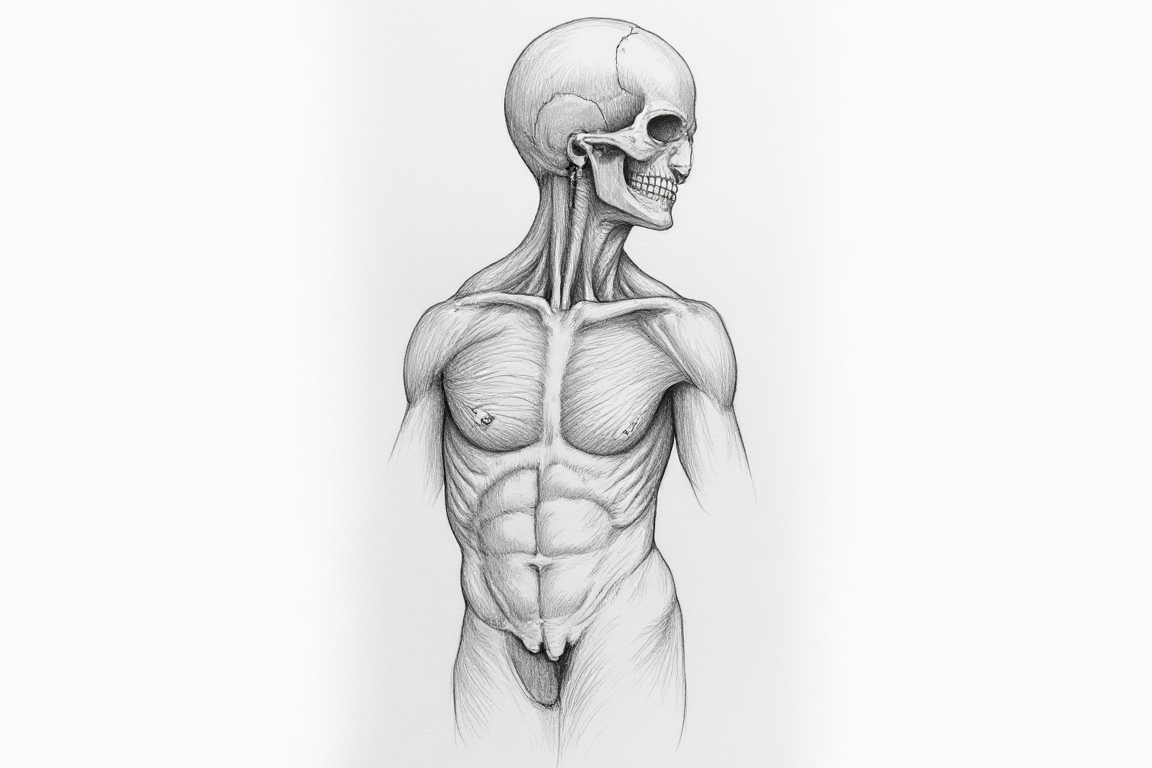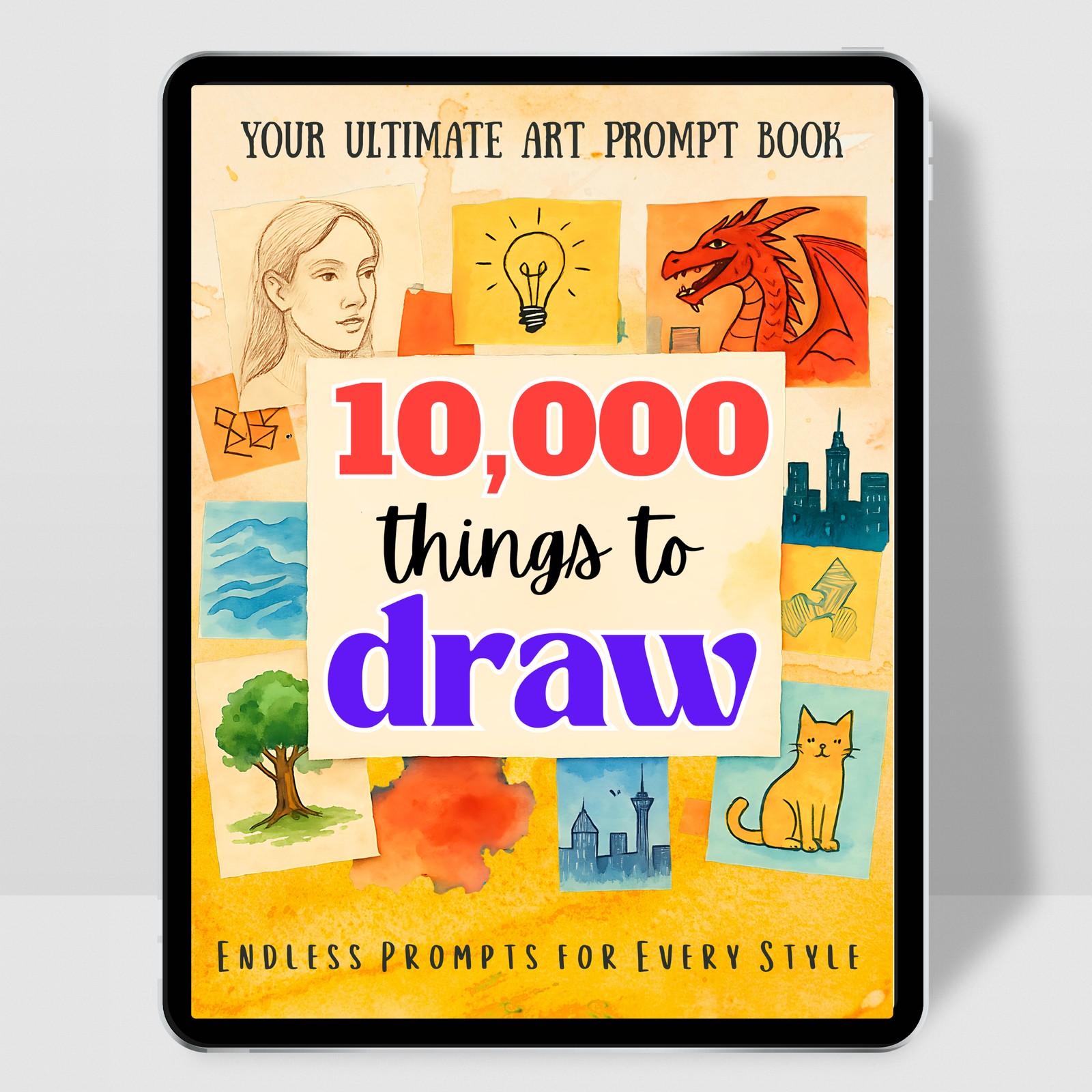Advanced Anatomy
Level up your anatomy studies with this pose generator! Explore short, complex figure prompts and dynamic poses to challenge your skills—perfect for intermediate to advanced artists. Click to generate a new idea and refine your drawing practice!
Advanced Anatomy Drawing Prompts Training Guide

Goal. Build figures that feel solid, balanced, and alive from a list of pose ideas. You will turn complex anatomy into simple forms you can control on the page. You will leave each session with studies that read clearly from a distance and still hold up when viewed close.
What this generator gives you
The prompt list supplies poses, actions, and attitudes so you do not stall before you start. The variety pushes you into angles and foreshortening that you might avoid on your own. This constant change is exactly what grows real skill because the rules get tested in many situations.
Start a clean session
Pick one pose from the list and say out loud what the body is doing in a single sentence. Set a short timer and draw the flow of the spine first so the attitude is locked in early. Keep the canvas simple and avoid tool hopping because the mind needs space to judge proportion and rhythm.
Gesture that drives the figure
Begin with the line of action from head to foot and let it curve through the center of the body. Hang the rib cage and pelvis on this path like beads on a string so the parts belong to one move. Push the curve a little more than you think because a timid line makes a stiff result.
Structure that holds volume
Turn the rib cage and pelvis into simple boxes so you can see tilt and twist. Use cylinders for the limbs and make sure each cylinder points clearly to the next joint. Connect the masses with wedges at the shoulders and hips so the arms and legs grow from the body instead of floating beside it.
Landmarks you can trust
Mark the pit of the neck, the front edge of the rib cage, the top points of the pelvis, and the bony tips at wrist and ankle. These marks are anchors that survive style changes and lighting tricks. When you place them honestly, the viewer believes the pose even if your finish is loose.
Planes and light that explain form
Choose one light direction at the start and group the entire shadow side into a single family of tones. Indicate visible plane breaks on head, chest, and pelvis so the turn of the form is never in doubt. Keep reflected light soft and secondary because strong bounce light without a clear key light makes mush.
Proportion checks that save time
Measure the head height and use it as a yardstick across the figure so scale stays honest. Compare the distance from pit of the neck to the navel with the distance from navel to the crotch and correct early if they drift. Keep the feet inside a stable triangle on the ground because balance matters as much as anatomy.
Hands and feet without fear
Start hands as a mitten with a wedge for the palm and a block for the thumb so the move reads before the fingers appear. Split the fingers into a group and then separate only what the pose needs so you do not drown in detail. Build feet from a tapered wedge and a small box for the heel and then bend the wedge to show pressure on the ground.
Head and neck that feel connected
Place a ball for the cranium and a simple wedge for the jaw and then cut the side plane so the angle of the brow makes sense. Seat the head on the sternomastoid muscles instead of a stick so the neck has weight and purpose. Aim the face with a center line and a brow line and the features will sit naturally without guesswork.
Movement and balance that read fast
Check where the body would fall if the ground disappeared and see if that point lands between the feet. If it does not, adjust the torso or a leg until the weight makes sense. Put a clear cast shadow under the feet to nail the pose to the floor and the figure will stop floating.
Common errors and direct fixes
A stiff drawing often comes from equal curves on both sides of the spine, so straighten one side and let the other side carry the bend. Short arms usually come from hiding the upper arm, so track the elbow from the shoulder to the wrist like a hinge. Flat limbs appear when cross contour lines are missing, so wrap a few lines around the form and the volume returns at once.
Beginner track that builds control
Work from clear photo poses and keep the studies short. Draw the gesture, place the two boxes for rib cage and pelvis, and stop after a clean shadow group paints in the big turn. Repeat this cycle many times so rhythm and proportion become reflex instead of a fight.
Advanced track that tests design
Start from the prompt without reference and construct the body from simple forms. After the first pass, find reference that matches the action and check volumes and joint limits against it. Keep the first design choice alive while you correct because the initial energy is often the part that makes the drawing sing.
One sitting workout that fits busy days
Spend six minutes on pure gesture that chases the main move and nothing else. Spend six minutes on boxes and cylinders that lock tilt and twist and show how the limbs connect. Spend twelve minutes on grouped light and a few accents and then stop before the drawing loses clarity under extra marks.
Seven day practice plan
Follow this plan when you want structure that still leaves room to think. Keep the time boxes honest so you return tomorrow with energy. Repeat the same plan with new prompts next week and push your best study into a longer piece once the habit feels steady.
| Day | Focus | Time | Expected result |
|---|---|---|---|
| One | Ten quick gestures from prompts with a clear line of action | Twenty minutes | Pages that show energy without noise and a stronger sense of flow |
| Two | Box and cylinder construction over five chosen gestures | Twenty five minutes | Clear tilt, twist, and limb connections that survive cleanup |
| Three | Landmark placement and proportion checks on three poses | Twenty five minutes | Reliable anchors that make correction fast and honest |
| Four | Three tone light plan for torso studies from different angles | Twenty five minutes | Grouped shadows and a believable sense of roundness |
| Five | Hands and feet studies that focus on simple blocks and wedges | Thirty minutes | Readable shapes that sit in the pose without guesswork |
| Six | Full figure mini render from a fresh prompt that keeps the design clean | Forty minutes | A small finished study with honest light and steady proportions |
| Seven | Review notes and targets for next week based on real misses | Ten minutes | A short plan that tells you what to fix and what to keep |
Example run from a single prompt
Assume the card says sprint start. Draw a strong curve from the head to the back foot and plant the front foot with a hard angle to the ground. Twist the pelvis against the rib cage, place the arms as opposing levers, and group the shadow under the body so the speed feels real. When the posture reads at thumbnail size, move to edges and accents and keep the rest quiet.
Tools and setup that reduce friction
Use one brush for lines and one large brush for tone so you can think about form instead of settings. Keep a single canvas size for the whole week so your eye can compare scale without math. Save pages in one folder that carries the date and the session goal so progress is obvious when you open it later.
How to judge real progress
Look for faster choices in the first five minutes and stronger reads from far away. Check that heads, hands, and feet sit inside the pose instead of feeling glued on. Notice that you correct early and lightly, which means structure is becoming a habit rather than a struggle.
Next steps after this page
Push one study per week into a longer render that tests patience and finish. Keep the same light plan and the same structure so the drawing does not wander during polish. Return to the prompt list the next day and repeat the short workout so the habit stays alive while the longer piece cooks.
Final notes
This guide exists to turn pose ideas into strong figures with clear design and honest light. The language is simple on purpose and the steps are direct because the goal is action, not theory. Use the plan when you want structure and use the short workout when time is tight, and your anatomy will improve in ways that show up in every drawing you make.
You may also like
Test your studies on faces and poses with the Portrait and Character Prompts so structure meets expression. For speed and recall, run short sets from the Speed Sketch Prompts and lock the line of action fast. To add story pressure, pick a clear theme from the One Word Prompts and build a figure that reads at a glance.

